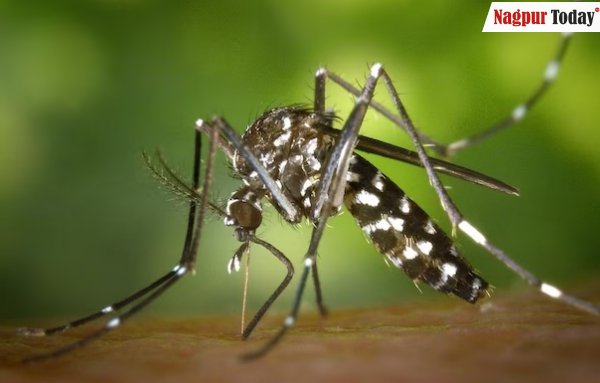
Nagpur: Taking serious cognisance of the rising cases of dengue and chikungunya in Nagpur, a team of National Centre for Vector-Borne Diseases Control (NCVBDC) is conducting vector survey at Nagpur’s Dr Babasaheb Ambedkar International Airport and the area that comes under Nagpur Municipal Corporation (NMC).
The purpose of this survey is to ascertain the Aedes mosquito-free status. Three officials of the team have already arrived on Monday at Nagpur. The team’s focus will be on the areas at the airport and surrounding areas.
According to reports, there were reports that some air passengers were found to be suffering from dengue. Nagpur is facing the outbreak of dengue and chikungunya. It is known that the Aedes mosquito causes dengue or chikungunya. The team will be visiting the inner part of the airport and the outer area of the airport that comes under Nagpur Municipal Corporation (NMC).
An important meeting of these officials was held on Wednesday with the team of Airport Public Health Officer, its staff, stakeholders and pest control staff of the airport after the survey. Nagpur is witnessing more cases of chikungunya than that of dengue. This year, Nagpur witnessed increased humidity due to which people did not keep water-coolers aside. In most homes, the coolers still have water stored, plus waterlogging created by rain creates mosquitoes breeding sites. The daily home to home visit by NMC’s health team is identifying the mismanagement by people.
How to identify a dengue mosquito?
The Aedes Aegypti mosquito, or dengue mosquito, is dark coloured and has typical white markings on the legs and lyre like markings on the thorax. It is significantly smaller in size, being only 4 to 7 millimetres long. In this species, the female mosquitoes are longer than males.
After feeding on blood, the mosquito lays its eggs in or near water. Generally, the newly hatched larvae feed upon algae, small aquatic organisms, particles of plants, when in the water-filled containers
The Aedes Aegypti mosquito cannot stay alive during the winter season and thus only lays eggs in the summers or monsoons. They usually lay their eggs near households due to the proximity to potted plants and still water.
Biting behaviour of Aedes Aegypti mosquito
The dengue mosquito mostly bites its victims during the day. The mosquito is most active during the daytime, approximately two hours after sunrise and several hours before sunset. Only the females of this species feed on blood.
These mosquitoes usually rest in cool and shaded areas, like closets and under the beds. Though they usually bite during the day, there are chances they may bite humans during the night as well. They usually target areas such as ankles and elbows.











